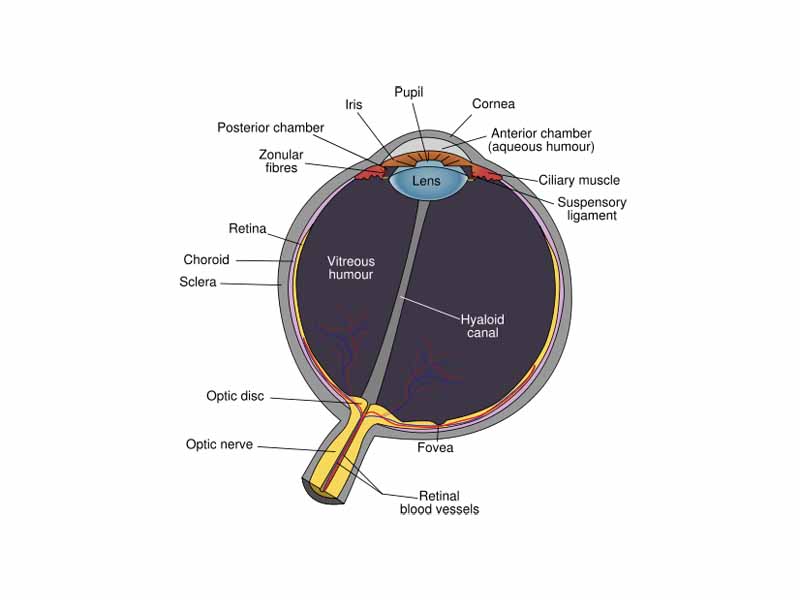Interdisciplinary Note (3 of 11)
The human eye is a topic of discussion in the psychology of sensation & perception, human physiology and optics. Light entering the eye passes through the cornea, the aqueous humor, the pupil, the lens, vitreous humor, and then onto the fovea of the neural retina. Most of the refraction in the eye occurs in the cornea because there is the greatest change in index of refraction (the liquid media surrounding the lens have indices of refraction much closer to the lens than air is to the cornea). The refraction produces a real image cast on the retina. For near images, ciliary muscles must contract in the process of accommodation, allowing the lens to become more curved which bends the light rays to a greater degree. A far sighted person's lens has lost its elasticity and doesn't round up as well. A nearsighted person's lens or cornea may have too much curvature, making it difficult to focus distant objects. If the eye produces an image behind the retina, the person is farsighted (near objects are blurred). A converging lens corrects the problem. Nearsightedness results from an image in front of the retina (which is worse for distant objects). The cornea and the lens are particularly important in focusing the light rays entering the eye to form a sharp image (a real image) on the retina.
